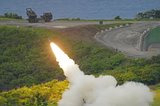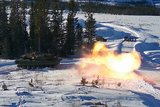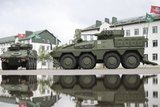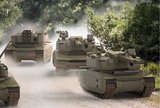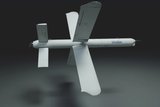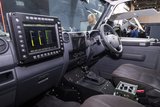IAF tests Arrow 3 interceptor missile
The Israeli Air Force (IAF) has successfully tested the Arrow 3 weapon system against a simulated target in space, the IAF announced on 19 February.
During the test, the target was detected by the weapon system's radar, the data was transmitted to the interception management center and the Arrow 3 missile was launched. Designated systems were installed on the missile in order to transmit unique data and enable a more effective analysis of the test results.
The Arrow 3 interceptor missile has been designed to defend against ballistic missile threats outside the atmosphere. Additional tests are expected in the US in 2018.
As a part of this test, the IAF examined the capabilities of the weapon system's new programme block. The new block has many improved defence capabilities with an emphasis on a larger radius and altitude of interception.
Commander of the Arrow Unit at IAF, said: ‘This was an operational test. We tested the Arrow 3 interceptor missile against a simulated target located thousands of kilometres away at an altitude of over 100 kilometres. This target was further and higher than any other target we've intercepted so far. The test shows the significant capabilities of the weapon system and its operators, capabilities which are now a part of the IAF's Aerial Defense Division.’
Related Equipment in Defence Insight
More from Land Warfare
-
Germany signs multi-billion-dollar deals for 6x6 CAVS and GDELS Eagle vehicles
The order is a further boost for the Common Armoured Vehicles System programme which has notched notable successes in the past 12 months. The first vehicle, made in Finland, will be delivered next year with local production expected to ramp up in 2027.
-
![Rheinmetall and KNDS tank tie-up narrows trans-European options]()
Rheinmetall and KNDS tank tie-up narrows trans-European options
The French and German governments signed an agreement in June 2018 to cooperate on the development of a new main battle tank under the Main Ground Combat System programme but the effort has struggled. This new agreement may damage it further.
-
![Hungary set to begin using Hero 400 loitering munitions]()
Hungary set to begin using Hero 400 loitering munitions
Developed by Israel's Uvision and with systems being sold in the thousands to multiple European NATO countries and the US, the Hero family of loitering systems is also in production in the US and Italy, the latter through Rheinmetall.
-
![Light Reconnaissance Strike – enabling a vital mission set (Studio)]()
Light Reconnaissance Strike – enabling a vital mission set (Studio)
A new system-of-systems concept will unlock digital integration of sensors and weapons for Light Forces, allowing them to shape the battlefield environment on their own terms and upgrade legacy platforms.








